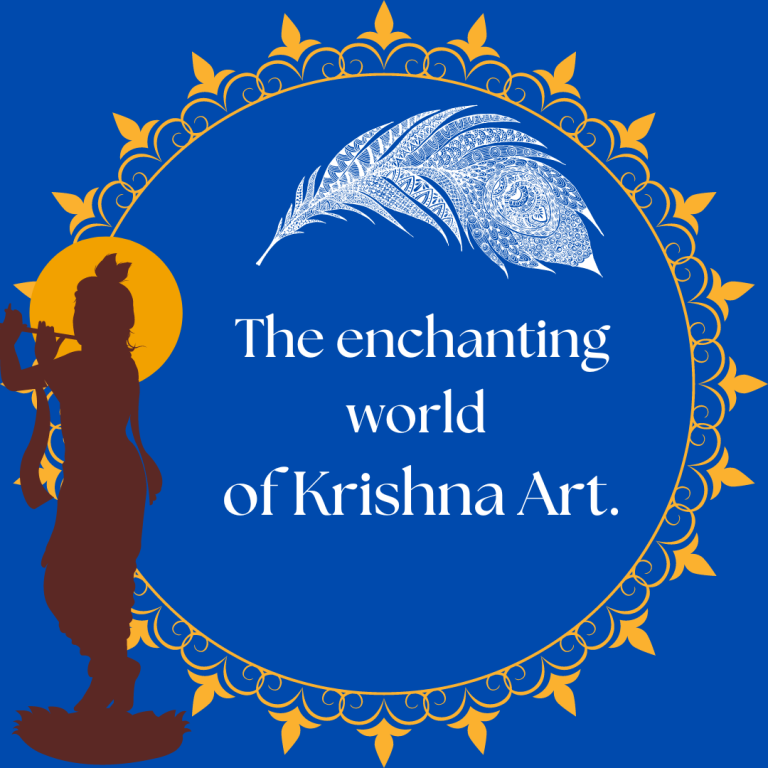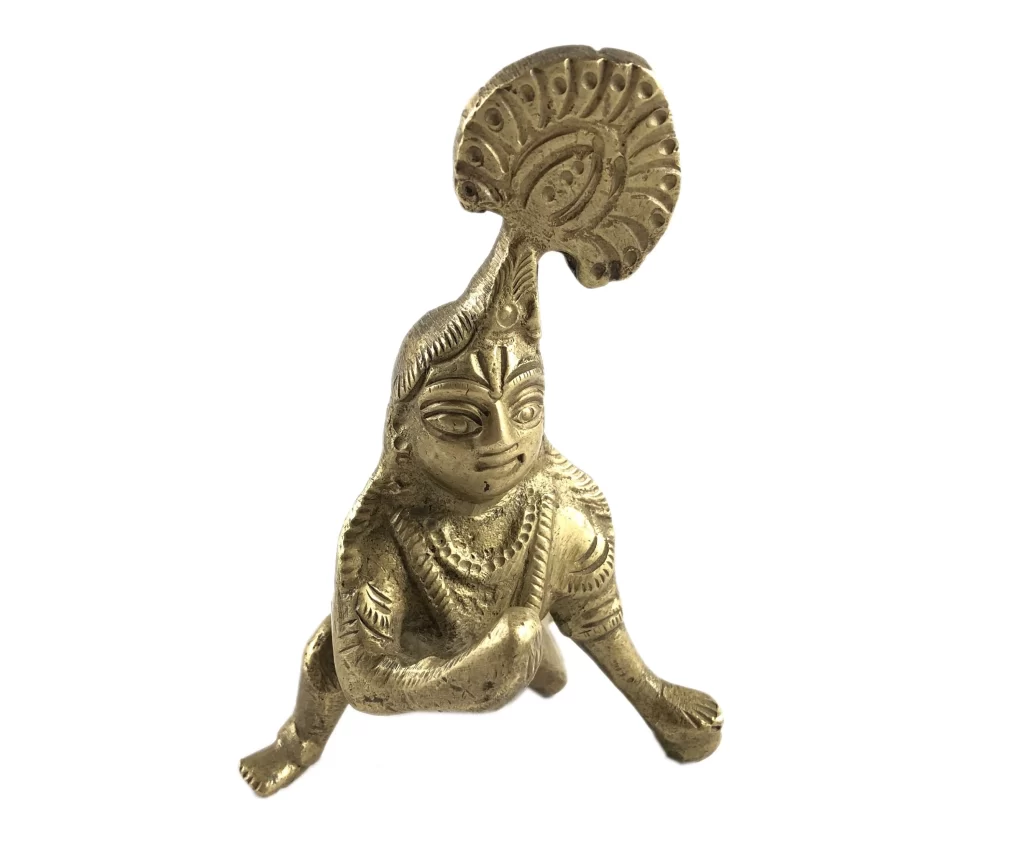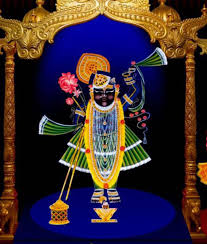The Enchanting world of Krishna Art.
Sell and Buy Art Online


Vishnu – The creator’s 8th avatar, Krishna. The life teacher through his Kalas. In the fast-moving world, Krishna is the way of life. The gate to the creative way starts from him. In this world, many Artists have tried to portray him in the finest way artistic way. The unconditional love language of the world, Krishna. What brings you the best life according to Krishna’s teaching?
These Kalas are not just the beautiful way of living life, they are the chains of life where every human can reach its higher consciousness. There are 16 kalas of Lord Krishna as follows:
Krishna Kalas and their significance.
- Daya – Compassion: Krishna’s first kala is compassion and kind. We can learn to be compassionate and kind towards every being. The purest form of love and respect towards everyone.
- Dhairya – Patience: The second kala of Krishna is being patient even in a terrible time. This kala can help us in our day-to-day life.
- Kshama – Forgiveness: This kala of Krishna teaches us about letting go. He forgave the hunter whose arrow was the reason for taking Krishna from this planet.
- Nyaya – Justice:
The kala of Justice which was in Lord Krishna. He fought for justice. Non-vengeance. This Amazing quality of his should be learned by us.
- Nirapeksha- Impartiality :
Lord Krishna with this kala never saw anyone with favours. This teaching can bring us a better perspective and be fair with everyone.
- Niraskata – Detachment:
Whether it was receiving a curse from Durvasa Muni, being separated from Mata Rukhmini for 12 years, his beloved son being taken, or the end of his clan. Lord Krishna remained detached from both grief and joy.
- Tapasya: Spiritual powers and Meditations:
Lord Krishna is also known as Yogeshwar. He who meditates and performs tapasya can achieve a monk-like stage of life. Where he can
- Aparchitta: Invincibility – This kala of his made him meet the challenges and calm.
- Danasheel – This Kala of Krishna brings his devotees to the learning of being beneficial for society. That can help balance the societies. If you are real Danasheel you don’t advertise it. It is the giver who always enjoys the happiness of giving. Whoever does good is never defeated by evil.
- Saundarjyamaya – (Beauty Incarnate): Krishna is a real beauty incarnate. Only devotees understand this divine beauty. But a normal human being can imbibe the beauty of character to receive the real joy of life. The devotee bathes daily, brushes his teeth, and wears clean clothes. But the greatest ornament is the character that descends from the Lord’s example. It makes us beautiful, a beauty that goes beyond the materialistic understanding.
- Nrityajna- (Best of Dancers) : Krishna danced on the hood of Kaliya Naag (a large snake). How can one dance in such a dangerous situation? God can do incomprehensible things to human reason (even powerful Demigods cannot understand the divine personality). The Lord also danced under the moonlight with 108 gopis. The material mind does not understand this sweetness. When someone dances well, he attracts the attention of the beholder and can make others, jealous. The envious mind does not understand the joy of someone who knows dance, happily. Stop complaining about life and just dance: When you can dance in a negative circumstance, you can enjoy every bit of life. Dance does not come from the body or mind! Dance is the feature of the heart through the soul.
- Sangitajna (Best of Singers): Krishna is the best singer. His flute has attracted not only people but also the whole of nature. The Lord attracts creation by simply playing his flute… God is beautiful and his music is also beautiful. Though, one can’t be that kind of singer what is the harm of striving to be a good singer through a lot of practice? Singing has got power to soothe the mind, body, and soul. All of nature with its birds, rivers, and forests sings joyfully in praise of God… and we can do that too.
- Neetibadi (Embodiment of Honesty): When reading the Bhagavad Gita, we can see the immense honesty of the Lord. These honest words are repeated to this day and will be repeated by those who come after us. Even today we teach children that “Honesty is the best policy”. If we can apply this policy in our lives we can create a positive image among the people and become real successful in life. If you keep honesty you will surely be well remembered and loved by all friends and family.
- Satyabadi (Truth Itself): Lord Krishna is the truth in person. The Lord is the embodiment of truth itself. We are certainly (potentially) different from the Supreme Lord but qualitatively we can be a source of truth. When you decide on the truth, your life becomes completely different from what it was before.
- Sarvagnata (Perfect master of all arts, such as poetry, drama, painting, etc.): Krishna is a master of all arts but we can be the students of these art forms at any stage of life. Our involvement in these art forms will always have a positive impact on our personality. Art descends from the Lord Himself. He is the divine artist.
- Sarvaniyanta (Controller of All): Krishna is Sarvaniyanta, the Isvara, supreme controller. We’ll never be like the Lord, that’s for sure. We must put aside the idea of wanting to be controlling, as our Lord is. But we can be Swayamniyanta (Controller of self). If we can perfectly control ourselves then we will not require controlling others. They will automatically become our followers and our well-wishers.
All these kalas can bring significant change in your life.
World’s best Art of Krishna:
- Laddu Gopal:
Krishna was known for his love of butter. Depicted is infant Krishna Laddu Gopal, his right raised hand holding a ball of butter, a bronze figure, dated to the 19th century.

2. Cow, calf, and child Krishna
The carved figure of a cow, with boy Krishna on his right and the calf on his left. The calf suckles the cow while Krishna milks her with his stretched right hand, his left hand holding the milk pot, made in marble, dated to the 20th century.

3. Shri Nathji
Shri Nathji is a Hindu deity, a form of Lord Krishna, as a 7-year-old child. Shri Nathji is the presiding deity of the Vaishnava sect, also known as the Vallabh Sampradaya originally established by Shri Vallabhacharya.
Krishna as Sri Nathji, a painting from Nathdwara, Rajasthan, dated to the late 19th century.

4. Lord Muralikrishna
The figure of Lord Krishna – playing on a flute; as Muralikrishna, on a carved pedestal, made in ivory, dated to the 20th century.

5. Krishna and Radha at play
Krishna and Radha are seen at play. Round cloud patches at the top and a verdant landscape depict the rainy season, a Mewar painting dated circa 1800.
6. Krishna and Radha at play
Krishna and Radha are seen at play. Round cloud patches at the top and a verdant landscape depict the rainy season, a Mewar painting dated circa 1800.
7. Illustrated page of Krishna with ‘gopis’
A page from Balagopalastuti shows Krishna seated with two gopis. Text in Devanagari script is on the side, from Gujarat, dated to circa 1590.
8. Deepak Raga
Painting depicting Deepak Raga, a musical mode. Krishna is seated with his consort, turned towards her, and holding a mirror in his right hand, a Ragamala painting from Rajasthan, dated to the 19th century.
9. Krishna lifting Mount Govardhan
Krishna lifting Govardhan-giri with gopis and cows around him, people of Vrindavan too are seen on the sides, painting from Bundelkhand, dated to the late 18th century.
10. Lord Krishna
Standing figure of Lord Krishna with a flute in his hands, behind him stands a cow, its head dropping to Krishna’s legs in loving devotion. The figure stands on a six-sided carved pedestal, divided into two orders with six animal leg-shaped stands, wood carving from South India, dated to the 19th century.
11. Krishna with Radha
Wall panel in wooden frame with figures of Krishna and Radha standing on a lotus pedestal. The figures are flanked by cowherds with their cattle. A river flows with boats, swans, and lotuses in it. Trees are embossed and a tall big tree has a peacock perched on one of its branches, made in bronze, dated to the 19th century.
12. Krishna and ‘gopis’
Contemporary batik showing Krishna and gopis in pichwai style. Krishna’s flute has two tassels on one side, a textile piece, dated to the 20th century.
13. Kalamkari curtain
Lord Krishna drives Arjuna’s chariot drawn by four horses. Arjuna is listening to the advice ‘Bhagavad Gita’; taught by Krishna in the great war of Kurukshetra in the epic Mahabharata. Krishna is shown in blue colour and Arjuna in yellow-orange colour. The horses are in a colour scheme of mainly blue, and yellow on a maroon ground. Arjuna’s chariot has the pennant representing the figure of Hanuman. The artwork is a rectangular Kalamkari, done with natural dyes, from Srikalahasti, Chittoor district, Andhra Pradesh, dated to the 19th century.
These famous and historic art of Krishna can make us explain so many things about ancient and modern art. To know such interesting art stories keep reading Thigma
Join Thigma Today
Whether you’re an artist eager to share your creations with the world or a collector in search of your next acquisition, Thigma is the ultimate destination for buying and selling art online. Join our vibrant community today and experience the future of the art market.
Sign up now and start your journey with Thigma!
If you know any artists or you are one feel free to contact us.
Image Created on Canva
